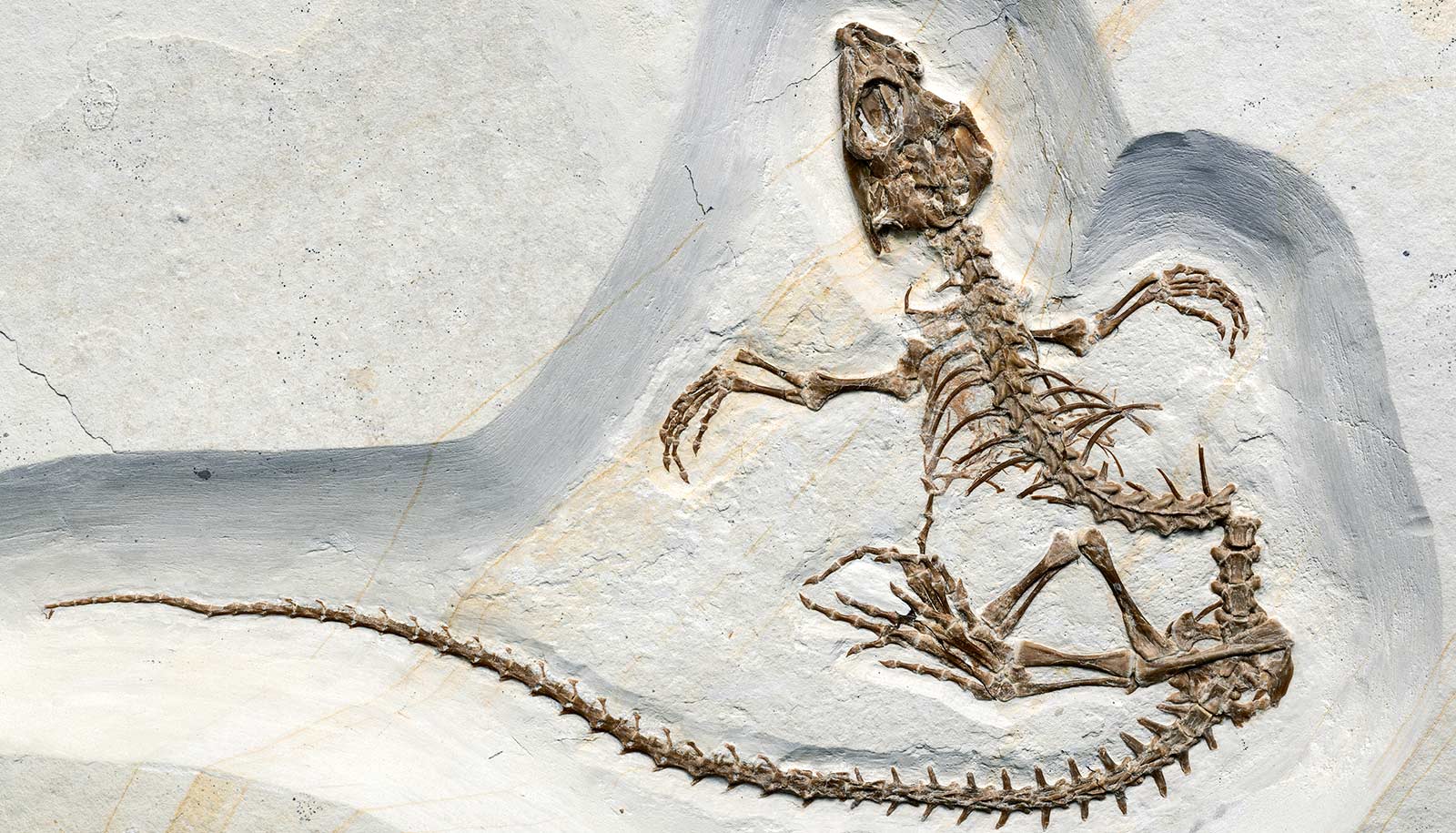A 155-million-year-old reptile fossil is filling some holes in the evolutionary story of animals that once roamed on land and then transitioned to life in the water.
A new report, which appears appears in the journal Royal Society Open Science, suggests some of the features of Vadasaurus herzogi, including its elongated, whip-like tail and triangular head, are suited to aquatic life. Its relatively large limbs, however, link it back in time to land-loving species.
Researchers found the fossil of Vadasaurus, Latin for “wading lizard,” in limestone quarries near Solnhofen, Germany, once part of a shallow sea and known for their rich trove of fossil finds.
The well-preserved fossil is now at the American Museum of Natural History in New York.

Unlocking its evolutionary secrets fell to research associate Gabriel Bever, also assistant professor of functional anatomy and evolution at Johns Hopkins University School of Medicine, and Mark Norell, the museum’s paleontology division chair.
“Anatomic and behavioral characteristics of modern groups of living things accumulated over long spans of time,” Bever says. “Fossils can teach us a lot about that evolutionary history, including the order in which those features evolved and their adaptive role in a changing environment.”
“Anytime we can get a fossil like this that is so well-preserved, and so significant in understanding a major environmental transition, it is very important,” Norell says.
Vadasaurus now goes on the list of sea creatures whose ancestors were land-dwelling vertebrates. The list also includes modern-day whales, seals, and sea snakes, as well as ancient (now-extinct) species of ichthyosaurs, mosasaur, and plesiosaurs.
Bever says the Vadasaurus specimen, likely an adult when it died, also appears linked by its anatomy to a small group of marine species called pleurosaurs long thought to have had terrestrial roots. Pleurosaurs lived during the Jurassic period, 185 million to 150 million years ago. Until now, scientists had fossils of only three ancient species.
Using two types of statistical algorithms and reconstructions of evolutionary “trees,” Bever and Norell concluded that Vadasaurus and the pleurosaurs are part of a larger lineage of reptiles called Rhynchocephalia.
Like the sea-loving pleurosaurs, Vadasaurus‘ skull was triangular, an adaptation found among many streamlined water-dwelling animals, such as most fish, eels, and whales. An elongated snout, common among sea animals, featured teeth farther away from the body for ensnaring fish.
By examining the shape and structure of the Vadasaurus‘ skull, the researchers also concluded that Vadasaurus‘ bite was likely a quick, side-to-side motion, compared with the slower, stronger bite typical of many land-dwelling animals.
Two amazing fossil skeletons belong to new lizard
Along with its aquatic features, Vadasaurus retained some features more often found among land vertebrates. For example, it had the large limbs, relative to the size of its body, expected of a land-dwelling reptile. Bever speculates that Vadasaurus didn’t use its limbs for propulsion in the water, but to steer, swimming like a modern sea snake by moving its spinal column with an undulating kind of motion.
“Our data indicate that Vadasaurus is an early cousin of the pleurosaur,” Bever says. “And these two reptiles are closely related to modern tuatara.”
The tuatara is a lizard-like, land-dwelling reptile that lives on New Zealand’s coastal islands and is the single remaining species of rhynchocephalian on Earth.
A complete evolutionary history of Vadasaurus will require more data and fossil finds, Bever says.
Fossil clarifies dolphin-like creature’s murky start
“We don’t know exactly how much time Vadasaurus was spending on land versus in the water. It may be that the animal developed its aquatic adaptations for some other reason, and that these changes just happened to be advantageous for life in the water.”
The American Museum of Natural History and Johns Hopkins School of Medicine funded the research.
Source: Johns Hopkins University


